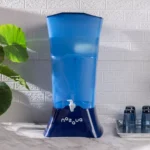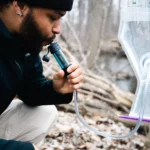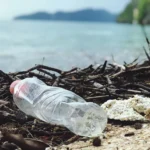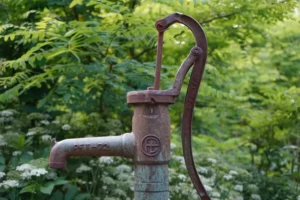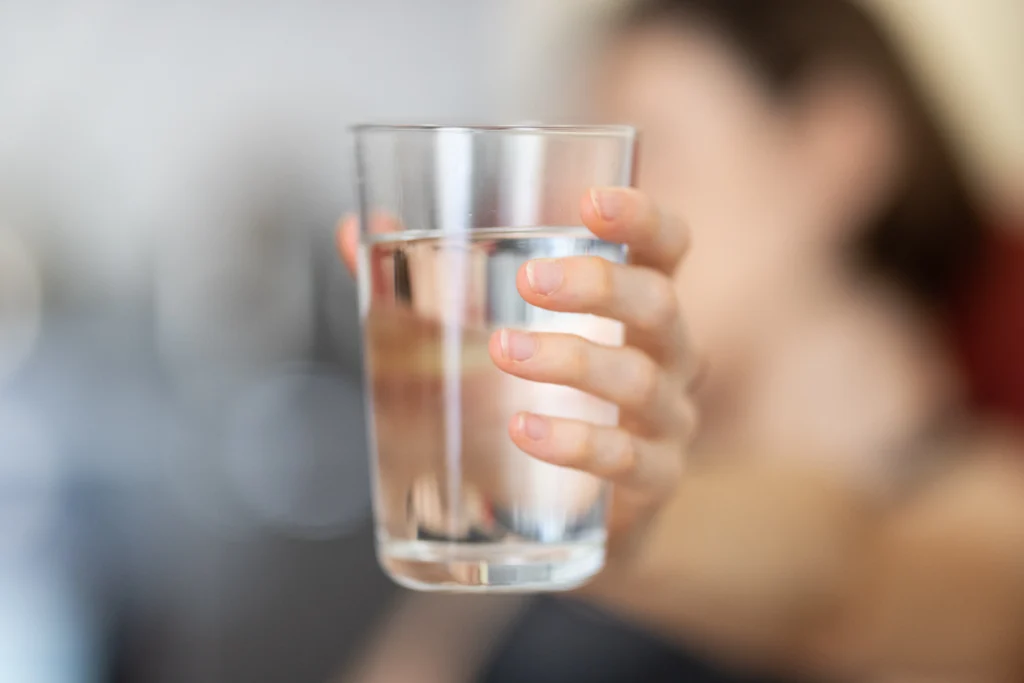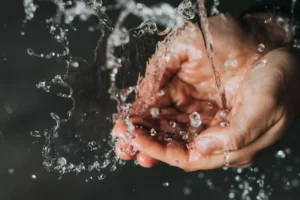How Earthquakes Become Water Disasters (And What Can Help)

How Earthquakes Become Water Disasters (And What Can Help)
By Nadia Hani & Cameron Barnes
On the surface, earthquakes seem pretty straightforward: they “quake” the “earth.” However, the truth is that these natural occurrences can have far-reaching impacts on more than just land.
Powerful earthquakes can devastate a region’s economy, agriculture, housing infrastructure, and even quality of water. In this way, a two-minute earthquake can impact a population for years afterward. Here, we will uncover the complexities of earthquakes on water quality and through the lens of Turkey’s earthquake in February.
How do Earthquakes Happen?
Earthquakes are triggered by movements deep within the earth’s crust. Tectonic plates, huge land masses beneath the earth’s surface, are constantly moving. Usually, this movement is much too slow for people to feel.
Scientists are still uncovering the timeline of when the earth’s tectonic plates started shifting, but the process is thought to have started up to four billion years ago: almost as old as Earth itself.
Sometimes,tectonic plates get “stuck” on each other and stop moving. Pressure and power builds up between these plates until they “unstick”. This “unsticking” results in a sudden jolt that can be felt for miles. These jolts are what we call earthquakes.
How Does an earthquake affect water?
In the immediate aftermath of a strong earthquake, it is common for power lines and water distribution systems to fail. Plumbing is especially vulnerable because shifting foundations can cause pipes to leak or even burst.
This means that it can be difficult to get water to people who need it the most. Inadequate access to water can lead to dehydration or sickness, compounding other health emergencies that may be unfolding at the same time.
Going Deeper: Earthquakes on Water Quality
In some cases, when the earthquake is strong enough, the quality of groundwater is affected. The shaking can loosen sediment from cracks in rocks and wells and mix with the water as it passes through. This mixing turns clean, drinkable water into mud that isn’t safe for people to consume.
This is because particles within the sediment can release contaminants that are dangerous to drink. According to the Department of Environmental Conservation, nitrates and arsenic compounds can enter water sources through sediment, and there is a higher risk of bacterial contamination when sediment is present.
Additionally, ruptures in pipelines and housing foundations can leak lead or sewage into water sources. If consumed, these contaminants can be damaging to the drinker’s health and wellbeing.
Water level impact
Earthquakes can also cause water levels to increase or decrease suddenly and dramatically. This may result in flooding or cause wells to become dry.
Both outcomes are dangerous in their own ways. Flooding damages homes and crops and can contaminate other water sources. Dry wells, on the other hand, can lead to dehydration and impact agriculture.
In these cases, it doesn’t necessarily matter how far a community is from the earthquake’s epicenter. The ripple effects of abnormal water levels can be felt for miles.
The Turkey Earthquake
The effect of earthquakes on water quality and the importance of potable water sources in emergency situations became especially evident on February 6th, 2023, when a 7.8 magnitude earthquake hit southern Turkey.
The earthquake affected at least 15.7 million people in Turkey and Syria, leaving 55,000 dead and 130,000 injured. It is the most devastating earthquake to hit Turkey in 20 years, disrupting agriculture and food distribution lines and leaving thousands homeless.
The immediate damage was followed by several powerful aftershocks and months of reconstruction. One of the greatest challenges in this period was creating safe, consistent access to clean water.
More than a drink
In the aftermath of the earthquake, water was required not only for drinking, but also other necessities such as bathing, cooking, cleaning, and medical care.
Because earthquakes can contaminate water sources in a variety of ways, survivors and first-aid providers turned to sealed water bottles and other emergency water purification solutions. These solutions don’t just provide clean water to drink, but support other tools like handwashing stations, toilets, and wet wipes.
How do water treatments help?
In response to the Turkey earthquake, the UN and other relief organizations provided water treatment supplies to clinics and emergency camps.
These responses took the form of both large- and small-scale water sanitation systems. For example, Oxfam, a British outreach organization, provided both handwashing stations and purification tablets, as well as technology that can be used to test chlorine levels in well water.
These kinds of solutions are especially helpful in the short-term because of their sustainability. Many of the filtration systems, whether designed for clinics or individuals, are reusable. Filters can last for years with proper maintenance, and are more sustainable than relying only on sealed water bottles.
Of course, these are intermediary solutions, aimed to give time for infrastructure to be rebuilt and city-wide water distribution to begin again.
These kinds of stopgap measures have proved useful in the past, and emergency responders are hoping that they will be effective in Turkey as well. Now, seven months after the first earthquake, concerns about infection, COVID, and sanitation are on the rise; access to water treatment is more important than ever.
Rebuilding
Relief measures and global support have gone a long way in providing clean water for survivors in Turkey and Syria. However, there is much more work to be done.
In a report by AP, a resident in Hatay (one of the 11 Turkish provinces impacted the most by the earthquake) remarked that, “Tap water is not potable, but people use it to wash. Pipes burst daily, and power is cut two or three times a day . . . You can’t easily drink water. In a place you can’t easily drink water, how are you going to make any decisions? Even bottled water tastes bad in Hatay.”
Beyond Turkey
It is hoped that continued efforts will help support survivors and their families in Turkey and Syria. Water filters, purification tablets, and handwashing stations are still in high demand and continue to make an impact in these communities.
Having access to clean water during emergency situations like earthquakes can make all the difference. In situations where entire water sources become polluted suddenly, it is invaluable to have water filtration and sanitation solutions available on hand.
Our hearts go out to the families affected by the Turkey earthquake and all those who continue to support them.
At Business Connect, we partner with industry professionals to provide these kinds of solutions to people who need them the most. We offer a variety of single- and multi-use filters that are used around the world to support communities who don’t have access to clean water.
If you are interested in learning more about how to support Turkey, get involved in our work, or build your own emergency preparedness plan, we invite you to contact us or become an affiliate here.
On this page
Have a story to share in the world of water, sanitation, and hygiene? Connect with our media team today!
Share Your Story
